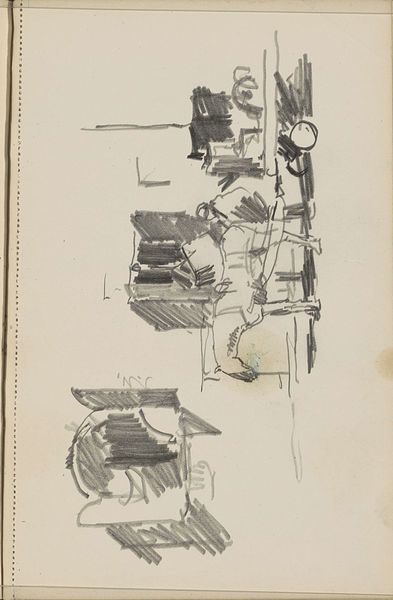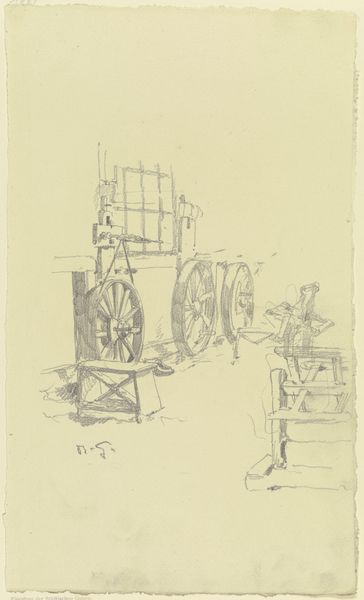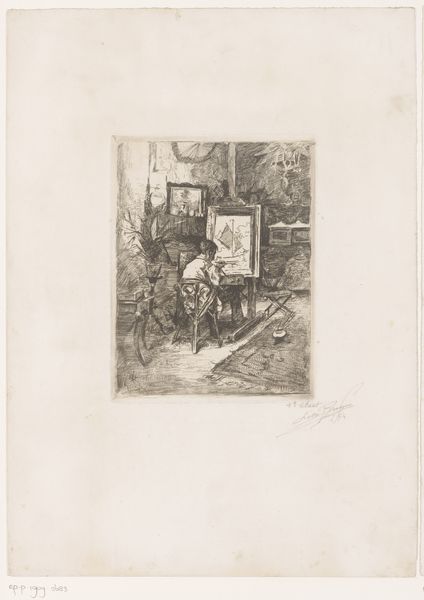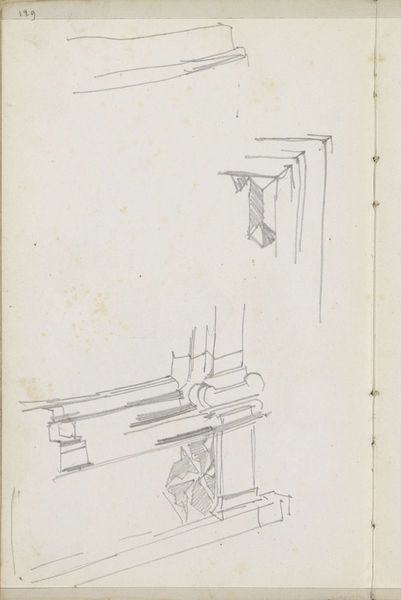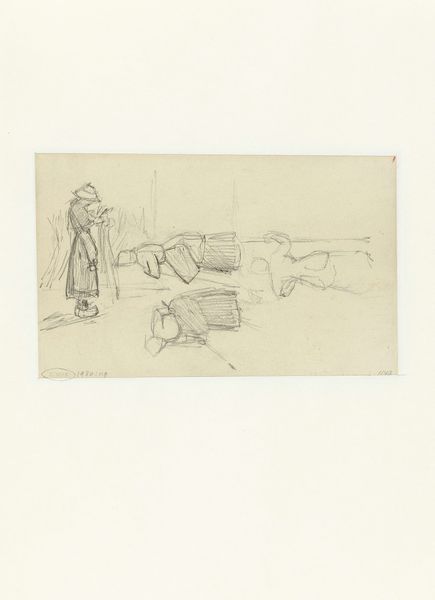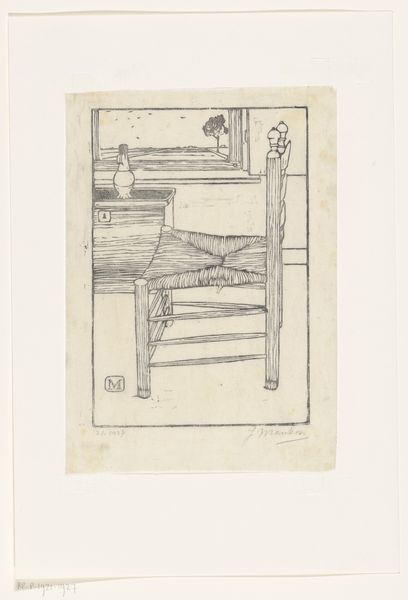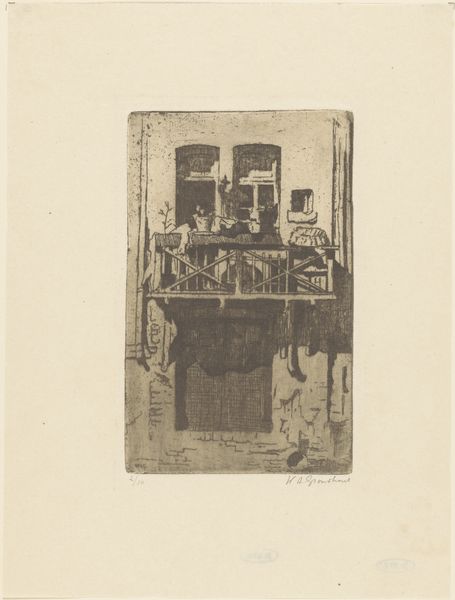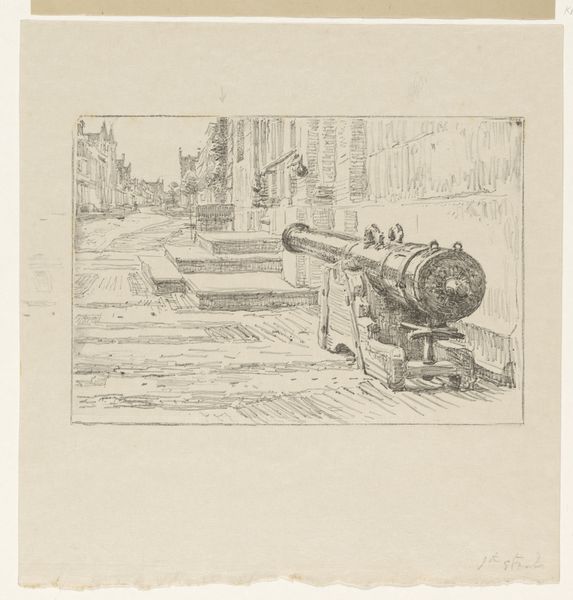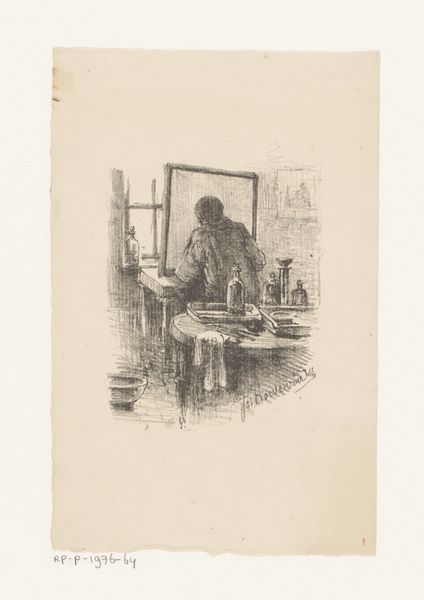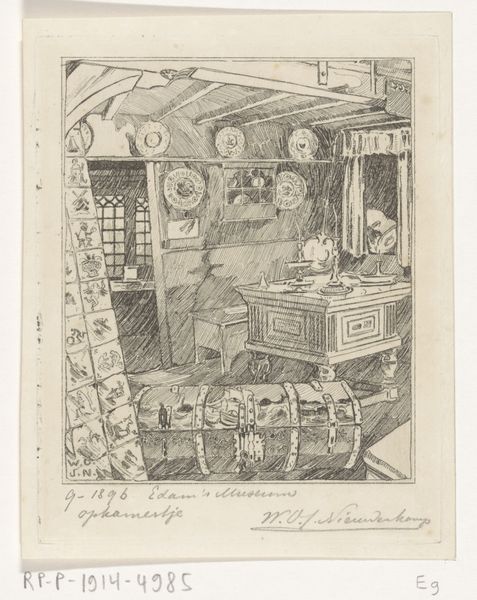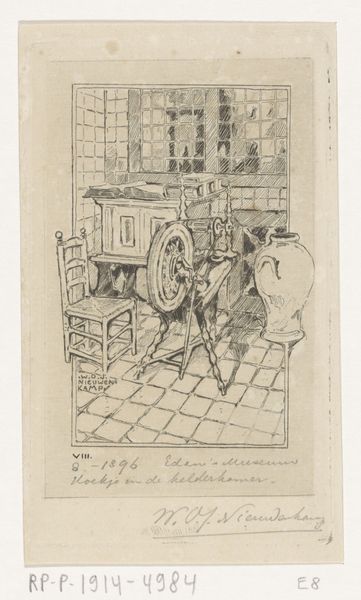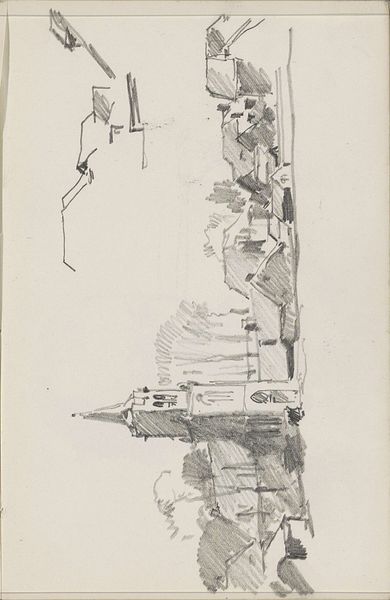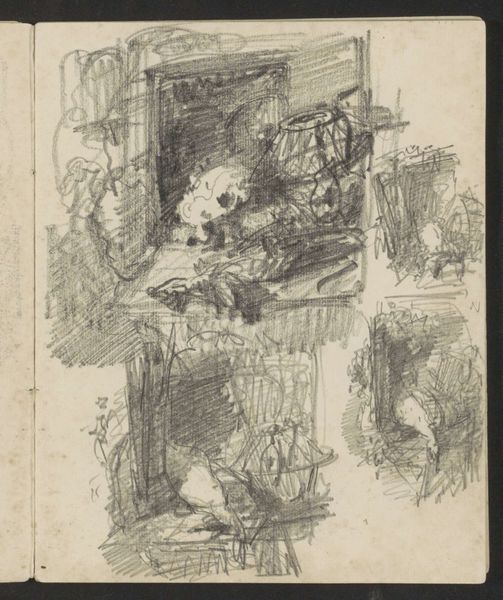
drawing, pencil
#
drawing
#
pencil sketch
#
figuration
#
pencil
Copyright: Public Domain
Curator: Fred Koch created this intriguing pencil drawing, dating it between 1933 and 1935. It’s currently part of the Städel Museum's collection and is simply titled *Dandelion, Taraxacum officinalis.* Editor: Well, “intriguing” is certainly one word for it. My first impression is that this image, even in its seeming simplicity, offers this almost unsettling blend of domestic familiarity and dreamlike estrangement. There’s something about the juxtaposition of these crisply rendered mundane objects, and a… horse in a box. It hits me like a muted scream from the subconscious. Curator: I love that! Koch’s playfulness shines through, don't you think? Look how the linear details dance—a touch whimsical and surreal all at once. You notice the curious composition with its dual focus? It’s like he’s collapsed two different viewpoints. One a sculptor in their studio, the other the dresser in the foreground? Editor: Exactly! And I can't ignore that feeling that these aren't just disparate scenes, but maybe points of reflection of isolation. The confined horse; the solitary artist and then even something about the ornately crafted, yet empty, chair hints at absence and waiting. Thinking about the early 30’s it could even be connected to mass trauma due to economic and political instability. Curator: Ah, a heavy interpretation! Maybe it just feels like he's cataloguing random corners of his space—a personal collection of… well, whatever caught his eye. Maybe that chest of drawers held particular fascination. Koch could be looking into a new reality; playing with perspective is always thrilling to observe in others because it brings us face to face with ourselves. We're not one singular block. I'm many pieces; the horse in a box makes me ponder. How do others see us? What lens makes my edges rigid and unforgiving? Is it possible for people to see the beauty even then? Editor: True, that free-associative feeling comes through as well! But I can't help see echoes of historical unease there, and given the dates—smack in the middle of rising fascism in Europe—the boxed animal in a cage starts screaming of enforced confinement. And aren't the seeds of every single "ordinary" atrocity there in those unassuming scenes of home, those chests of drawers of banal cruelty? Curator: Always so grim! Though I can appreciate you teasing out deeper meanings from this work, it also might serve as a mirror reflecting your own anxieties about the political landscape. But you are right; we're all influenced. I may be the "artist," but my work still is and forever will be a reaction to the culture. What would the Dadaists say about a horse in a box? We live in surreal times so maybe art imitating life here. Editor: Perhaps that reading does come with its own biases. Still, I am glad this strange, seemingly "simple," piece manages to invite such a diverse array of views to surface.
Comments
No comments
Be the first to comment and join the conversation on the ultimate creative platform.
